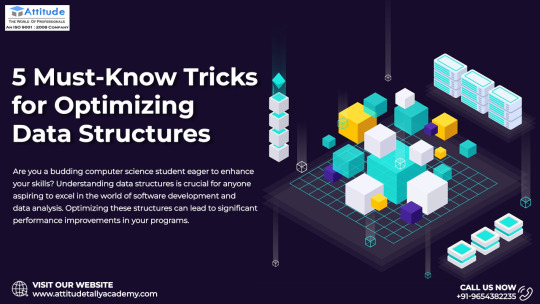Text
Free VS Paid Tools 🚨✅ || Ai Tools For Designing
Master the art of video storytelling! Our Video Editing Course offers hands-on training in crafting compelling narratives, visual effects, and seamless edits. Elevate your social media presence with expert techniques in editing, color grading, and audio manipulation. Unleash your creativity and make impactful videos that captivate audiences.
For more visit: https://www.attitudetallyacademy.com/class/video-editing-expert
Contact us:
+91–9999–801270
+91–96543 82235
0 notes
Text
Unlock Your Creativity: Exploring the Innovations of 3Ds Max 2024

Are you ready to elevate your digital artistry to new heights? Prepare to be blown away by the latest offering from Autodesk - 3Ds Max latest feature. Bursting with a slew of cutting-edge features and enhancements, this version is poised to revolutionize your creative process. Join us as we delve into the thrilling updates and functionalities that 3Ds Max 2024 brings to the table.
Revamped Modeling Tools:
Experience a paradigm shift in modeling with the enhanced tools of 3Ds Max 2024. Whether you're sculpting intricate characters or crafting immersive environments, our advanced polygon modeling and spline workflows empower you to bring your visions to life with unparalleled precision and ease.
Turbocharged Performance:
In the fast-paced world of 3D design, performance is paramount. Say goodbye to sluggish workflows as 3Ds Max 2024 delivers lightning-fast viewport performance and accelerated rendering times. Dive into your projects with confidence, knowing that technical constraints will no longer hinder your creative expression.
Next-Level Rendering:
Witness your designs transcend reality with the enhanced rendering capabilities of 3Ds Max 2024. Harness the power of ray tracing and global illumination to create mesmerizing visualizations that captivate and inspire. Whether you're crafting architectural marvels or breathing life into animated sequences, our advanced rendering techniques ensure professional-grade results every time.
Seamless Collaboration:
Collaboration lies at the heart of innovation, and 3Ds Max 2024 is designed to foster seamless teamwork. With integrated collaboration tools, real-time sharing, and version control, working with teammates and clients has never been easier. Whether you're collaborating from across the globe or within the confines of a studio, our platform empowers you to communicate effectively and realize your collective vision.
In Conclusion:
The latest iteration of 3Ds Max is more than just a software update - it's a game-changer for digital artists and designers alike. With enhanced modeling tools, unparalleled performance, state-of-the-art rendering capabilities, and robust collaboration features, 3Ds Max 2024 update
is your gateway to limitless creativity. Embrace the future of 3D design technology today by exploring the boundless possibilities of 3Ds Max 2024!
0 notes
Text
Full Stack Security: Safeguarding Your Applications

Introduction
In today's digital landscape, ensuring the security of your applications is paramount. With cyber threats becoming more sophisticated, implementing robust Full Stack Security measures is crucial to safeguarding your valuable data and maintaining customer trust. In this blog, we'll delve into the concept of Full Stack Security and explore how it can help mitigate risks and protect your applications.
Understanding Full Stack Security
Full Stack Security refers to the comprehensive approach of securing every layer of your application stack, from the frontend user interface to the backend database and everything in between. This includes securing APIs, authentication mechanisms, data storage, and infrastructure components. By addressing vulnerabilities at each layer, Full Stack Security provides a holistic defense against potential threats.
Importance of Application Risk Management
Application Risk Management plays a pivotal role in Full Stack Security. It involves identifying, assessing, and mitigating risks associated with your applications. This includes conducting regular security audits, vulnerability assessments, and penetration testing to identify potential weaknesses. By proactively managing risks, you can enhance the resilience of your applications and minimize the likelihood of security breaches.
Key Strategies for Full Stack Security
Secure Coding Practices: Adopting secure coding practices is fundamental to Full Stack Security. This includes input validation, parameterized queries, and avoiding hardcoded credentials to prevent common vulnerabilities like SQL injection and cross-site scripting (XSS) attacks.
Authentication and Authorization: Implement strong authentication mechanisms such as multi-factor authentication (MFA) and OAuth to verify user identities securely. Additionally, enforce strict authorization policies to control access based on user roles and permissions.
Data Encryption: Encrypt sensitive data both at rest and in transit using strong encryption algorithms. This adds an extra layer of protection, ensuring that even if data is intercepted, it remains unreadable without the decryption key.
API Security: Secure APIs by implementing authentication, rate limiting, and validation checks to prevent unauthorized access and API abuse. Use HTTPS to encrypt data exchanged between clients and servers.
Regular Updates and Patch Management: Keep your software dependencies, libraries, and frameworks up to date with the latest security patches. Vulnerabilities in outdated software can be exploited by attackers, making patch management a critical aspect of Full Stack Security.
Conclusion
In conclusion, Full Stack Security is essential for safeguarding your applications against evolving cyber threats. By integrating robust Application Risk Management practices and adopting key security strategies, you can enhance the security posture of your applications and protect sensitive data from unauthorized access. Prioritize Full Stack Security to build trust with your users and ensure the longevity of your digital assets.
Implementing Full Stack Security measures such as Application Risk Management and adopting best practices in Full Stack Security can significantly enhance the security posture of your applications, protect sensitive data from unauthorized access, and build trust with your users. By prioritizing security at every layer of your application stack, you can mitigate risks effectively and safeguard your valuable assets in today's threat landscape.
0 notes
Text
Full Stack Security: Safeguarding Your Applications

Introduction:
In today's fast-evolving digital sphere, safeguarding your applications stands as a cornerstone of success. With the rise of sophisticated cyber threats, embracing robust security measures across the entire application stack is imperative to shield your invaluable data and uphold customer trust. This article delves into the concept of Full Stack Security, exploring its significance in mitigating risks and fortifying your applications.
Understanding Full Stack Security:
Full Stack Security encompasses a holistic approach to fortify every layer of your application stack, spanning from the user interface to the backend infrastructure. This entails securing APIs, authentication mechanisms, data repositories, and infrastructure components, ensuring a comprehensive defense mechanism against potential threats.
The Vital Role of Application Risk Management:
At the heart of Full Stack Security lies Application Risk Management, a proactive process of identifying, evaluating, and mitigating risks associated with your applications. This encompasses conducting regular security audits, vulnerability assessments, and penetration testing to pinpoint potential weaknesses, thereby bolstering your application's resilience and reducing the likelihood of security breaches.
Essential Strategies for Full Stack Security:
1. Embrace Secure Coding Practices: Uphold secure coding principles such as input validation, parameterized queries, and the avoidance of hardcoded credentials to thwart common vulnerabilities like SQL injection and cross-site scripting (XSS) attacks.
2. Strengthen Authentication and Authorization: Deploy robust authentication mechanisms such as multi-factor authentication (MFA) and OAuth, coupled with stringent authorization policies to govern access based on user roles and permissions.
3. Implement Data Encryption: Safeguard sensitive data by employing robust encryption protocols for both data at rest and in transit, ensuring that intercepted data remains unintelligible without the decryption key.
4. Enhance API Security: Secure APIs through the implementation of authentication mechanisms, rate limiting, and validation checks, while leveraging HTTPS to encrypt data transmission between clients and servers.
5. Prioritize Regular Updates and Patch Management: Maintain the currency of your software dependencies, libraries, and frameworks by promptly applying the latest security patches. Outdated software poses vulnerabilities that can be exploited by attackers, underscoring the criticality of patch management in Full Stack Security.
Conclusion:
In essence, Full Stack Security emerges as a pivotal linchpin in fortifying your applications against the ever-evolving threat landscape. By intertwining robust Application Risk Management practices with key security strategies, organizations can elevate their security posture, safeguard sensitive data, and foster trust with their user base. Prioritizing Full Stack Security serves as an indispensable safeguard, ensuring the enduring protection of your digital assets amidst today's dynamic cyber environment.
Suggested Blogs: -
Coding Skills Upgrade
Creative Coding Strategies
Full stack development trends
0 notes
Text
Exploring the Latest Features of 3Ds Max 2024

Introduction
Are you a digital artist or animator looking to stay ahead in the game? If so, you’re in for a treat with the latest release of Autodesk's renowned software, 3Ds Max Latest features Packed with a plethora of new features and enhancements, this version promises to revolutionize your workflow and take your creative projects to new heights. In this blog, we’ll delve into the exciting updates and functionalities that 3Ds Max 2024 brings to the table.
Enhanced Modeling Tools
One of the standout features of 3Ds Max 2024 is its enhanced modeling tools. From advanced polygon modeling to intricate spline workflows, you'll find everything you need to create detailed and realistic 3D models with precision and ease. Whether you're designing characters, environments, or objects, the improved modeling tools in 3Ds Max 2024 will streamline your workflow and boost your creativity.
Improved Performance Performance is crucial in 3D design software, and 3Ds Max 2024 delivers significant improvements in this area. With optimized viewport performance and faster rendering times, you can work more efficiently and bring your ideas to life without being held back by technical limitations. Whether you're working on complex scenes or high-resolution textures, 3Ds Max 2024 ensures smooth and responsive performance throughout your project.
Enhanced Rendering Capabilities Rendering is where your designs come to life, and 3Ds Max 2024 offers enhanced rendering capabilities that will take your visualizations to the next level. With support for advanced rendering techniques, including ray tracing and global illumination, you can achieve stunning realism and lifelike imagery in your renders. Whether you're creating architectural visualizations, product designs, or animated sequences, 3Ds Max 2024 provides the tools you need to achieve professional-quality results.
Integrated Collaboration Tools Collaboration is key in today's digital workflows, and 3Ds Max 2024 includes integrated collaboration tools that make it easier than ever to work with team members and clients. From real-time collaboration features to seamless file sharing and version control, you can collaborate effectively on projects of any scale. Whether you're working remotely or in a studio environment, 3Ds Max 2024 empowers collaboration and ensures smooth communication throughout the design process.
Conclusion
In conclusion, the latest features of 3Ds Max 2024 make it a game-changer for digital artists and designers. With enhanced modeling tools, improved performance, advanced rendering capabilities, and integrated collaboration tools, 3Ds Max 2024 Updates provides everything you need to bring your creative visions to life. Stay updated with the latest in 3D design technology by exploring the exciting features of 3Ds Max 2024 today!
Suggested Blogs: -
Global Interior Design Trends
Interior design tips
Efficient CAD techniques
0 notes
Text
Optimizing Your Content for SEO: Tips and Tricks
Unlock the secret to soaring 🚀 in search rankings with our latest guide on "Optimizing Your Content for SEO Tips and Tricks"! 🌟 Learn proven strategies to boost visibility and drive traffic. 📈 Don't miss out—optimize like a pro today! 🌐💡
0 notes
Text
Optimizing Your Content for SEO: Tips and Tricks
Unlock the secret to soaring 🚀 in search rankings with our latest guide on "Optimizing Your Content for SEO Tips and Tricks"! 🌟 Learn proven strategies to boost visibility and drive traffic. 📈 Don't miss out—optimize like a pro today! 🌐💡
#learnwithattitudeacademy#enrollnow#attitudeacademy#bestcourse#digital marketing#Search Engine Optimization
0 notes
Text
Edit Like a Pro: Advanced Techniques for Perfecting Your Videos

Introduction
In today's digital age, video content reigns supreme. Whether you're a content creator, marketer, or just someone looking to share your stories, mastering the art of video editing can take your content to the next level. In this guide, we'll delve into advanced video editing techniques that will help you refine your skills and create stunning videos that captivate your audience.
Why Advanced Video Editing Techniques Matter
Before diving into the specifics, let's understand why mastering advanced video editing techniques is crucial for creating high-quality content:
Professionalism: Advanced techniques elevate the quality of your videos, making them look polished and professional.
Engagement: Engaging visuals are key to capturing and retaining viewers' attention, leading to higher engagement rates.
Brand Image: Well-edited videos reflect positively on your brand, establishing credibility and trust with your audience.
Competitive Edge: In a competitive digital landscape, exceptional editing sets you apart and attracts more viewers.
Expert Video Editing Skills: Techniques to Master
Color Grading: Enhance the mood and tone of your videos with precise color grading. Use tools like Adobe Premiere Pro or DaVinci Resolve to adjust colors, contrast, and saturation for a cinematic look.
Audio Enhancement: Clean and crisp audio is as important as video quality. Invest time in audio editing to reduce background noise, balance levels, and add enhancements like sound effects and music overlays.
Advanced Transitions: Move beyond basic cuts and fades. Experiment with dynamic transitions such as wipes, zooms, and morph cuts to create seamless transitions between scenes.
Motion Graphics and Animation: Incorporate motion graphics and animations to add flair to your videos. Use text animations, lower thirds, and graphic overlays to convey information creatively.
Green Screen Editing: Master the art of green screen editing to place your subject in any virtual environment. Achieve professional-looking effects and create immersive storytelling experiences.
Advanced Effects: Explore advanced effects like masking, tracking, and compositing to add depth and complexity to your videos. These techniques allow you to blend multiple elements seamlessly.
Optimized Rendering: Efficient rendering is essential for maintaining video quality and reducing file sizes. Understand different codecs, resolutions, and settings for optimal playback across various platforms.
Putting It All Together
To truly excel in advanced video editing, practice, experimentation, and continuous learning are key. Stay updated with the latest trends and tools in the industry, and don't hesitate to push the boundaries of your creativity.
By honing your expert video editing skills, you'll not only produce visually stunning content but also forge deeper connections with your audience. Remember, every edit you make contributes to the overall storytelling experience, so strive for perfection while staying true to your unique style.
In conclusion,
Mastering advanced video editing techniques empowers you to create captivating content that leaves a lasting impact. Elevate your videos, engage your audience, and showcase your expertise with professional editing prowess.
Ready to Edit Like a Pro?
Suggested Blogs: -
Portfolio layout ideas
video editing tips
Font pairing techniques
#attitudeacademyblogs#attitudeacademy#VideoEditingblog#LearnNow#LearnMore#Blogs#BestBlogforVideoEditing#Skills
0 notes
Text
Ethical Considerations in Data Analytics: Privacy and Security

Introduction
In today's digital age, data analytics plays a crucial role in shaping business strategies and decision-making processes. However, along with its benefits, data analytics also brings forth ethical considerations, particularly concerning security and Privacy in data analysis. Let's delve into these important aspects to understand how data privacy ethics impact the field of data analysis.
Understanding Data Privacy Ethics
Data privacy ethics revolve around the responsible handling, usage, and protection of sensitive information. It involves respecting individuals' rights to control their personal data and ensuring that data is collected and used ethically and legally. In the context of data analytics, privacy considerations are paramount as they directly impact individuals' trust and confidence in data-driven processes.
The Importance of Privacy in Data Analysis
Privacy in data analysis refers to the protection of individuals' privacy rights during the collection, storage, processing, and sharing of data. It involves implementing robust security measures, obtaining consent for data collection, anonymizing data where necessary, and complying with relevant privacy regulations such as GDPR and CCPA.
Key Ethical Considerations
Transparency: Organizations must be transparent about their data collection practices, the purpose of data analysis, and how data will be used. This transparency builds trust and allows individuals to make informed decisions about sharing their data.
Consent: Obtaining explicit consent from individuals before collecting their data is essential. Consent should be voluntary, informed, and specific, detailing what data will be collected, how it will be used, and who will have access to it.
Anonymization and Data Minimization: Anonymizing data by removing personally identifiable information (PII) helps protect individuals' identities. Data minimization involves collecting only the necessary data for a specific purpose, reducing the risk of unauthorized access or misuse.
Security Measures: Implementing robust security measures such as encryption, access controls, and regular audits is crucial to safeguarding data against breaches and unauthorized access.
Compliance: Adhering to privacy regulations and industry standards ensures that data analytics practices align with legal and ethical requirements, protecting both individuals' rights and the organization's reputation.
Balancing Innovation and Ethics
While data analytics drives innovation and business growth, ethical considerations must not be overlooked. Finding the right balance between leveraging data insights for competitive advantage and upholding privacy and security principles is key to sustainable success in today's data-driven landscape.
In conclusion,
Ethical considerations in data analytics, particularly regarding privacy and security, are paramount in maintaining trust, credibility, and legality. By prioritizing data privacy ethics, organizations can build stronger relationships with customers, mitigate risks, and foster a culture of responsible data usage.
Stay tuned for more insights on data analytics ethics and best practices.
Suggested Blogs: -
Optimizing AI with Data Science
Excel data analysis tips
Data Science software
#attitudeacademyblogs#attitudeacademy#DataAnalyticsblog#LearnNow#LearnMore#Blogs#BestBlogforDataAnalytics#Skills
0 notes
Text
Staad Pro Basics: Getting Started with Structural Design

Introduction
Staad Pro, one of the most powerful structural analysis software tools available in the market today. Whether you're a seasoned engineer or a student just delving into the world of structural design, Staad Pro offers a robust platform to create, analyze, and optimize your structural designs with precision and efficiency.
Understanding Structural Analysis Software
Before we dive into the specifics of Staad Pro, let's first understand what structural analysis software is and why it's crucial in the field of engineering and architecture. Structural analysis software is a specialized tool that allows engineers and designers to simulate and assess the behavior of structures under various conditions such as loads, forces, and environmental factors. It plays a pivotal role in ensuring the safety, stability, and functionality of buildings, bridges, towers, and other structures.
Introducing Staad Pro
Staad Pro, developed by Bentley Systems, is a leading structural analysis and design software widely used by professionals across industries. Its intuitive interface, powerful analysis capabilities, and extensive range of tools make it a preferred choice for engineers involved in designing complex structures.
Key Features of Staad Pro
User-Friendly Interface: Staad Pro's interface is designed for ease of use, allowing users to create and modify structural models efficiently.
Multiple Analysis Options: The software offers various analysis methods including static, dynamic, and finite element analysis, catering to a wide range of structural design requirements.
Integrated Design Modules: Staad Pro incorporates design modules for steel, concrete, timber, and other materials, facilitating comprehensive structural design and analysis.
Visualization Tools: Visualizing structural behavior is made easy with Staad Pro's 3D modeling and rendering capabilities, enabling engineers to assess designs effectively.
Getting Started with Staad Pro
Now, let's walk through the basic steps to start using Staad Pro for structural design:
Installation: Begin by downloading and installing Staad Pro on your computer. Ensure you have the necessary system requirements to run the software smoothly.
Creating a New Project: Launch Staad Pro and create a new project. Define the project settings such as units, coordinate systems, and design codes as per your project requirements.
Modeling: Use Staad Pro's modeling tools to create your structural model. Input geometry, material properties, loads, and boundary conditions to accurately represent your design.
Analysis: Perform structural analysis using Staad Pro's analysis capabilities. Choose the appropriate analysis method based on your project's needs and interpret the results to assess structural performance.
Design Optimization: Utilize Staad Pro's design modules to optimize structural elements such as beams, columns, and connections for strength, stability, and cost-effectiveness.
Documentation: Generate detailed reports, drawings, and documentation directly from Staad Pro to communicate design specifications and analysis results effectively.
Staad Pro Tutorial Resources
To further enhance your understanding and proficiency in using Staad Pro, consider exploring the following resources:
Official Staad Pro tutorials and documentation provided by Bentley Systems.
Online video tutorials and courses available on platforms like YouTube, Coursera, and Udemy.
Participating in workshops, webinars, and conferences focused on structural analysis and design software.
Conclusion
In conclusion, Staad Pro is a versatile and powerful tool for structural engineers and designers, offering a wide range of features to streamline the design process and ensure structural integrity. By following the basic steps outlined in this guide and leveraging available Staad Pro tutorial resources, you can embark on a successful journey in mastering Staad Pro and creating exceptional structural designs.
Suggested Blogs: -
Revit architecture basics
AutoCAD automation techniques
Efficient CAD techniques
#attitudeacademyblogs#attitudeacademy#StaadProblog#LearnNow#LearnMore#Blogs#BestBlogforStaadPro#Skills
0 notes
Text
Tricks to Mastering Color Combinations in Fashion Designing

Introduction:
Are you passionate about fashion designing and eager to create stunning color combinations that will make your designs stand out? Understanding color theory and mastering color combinations is essential for any aspiring fashion designer. In this blog post, we'll explore some tricks to help you become proficient in creating captivating color palettes for your designs.
Learn the Basics of Color Theory:
Before diving into color combinations, it's important to have a solid understanding of color theory. Familiarize yourself with concepts such as the color wheel, primary, secondary, and tertiary colors, as well as color harmonies like complementary, analogous, and triadic colors.
Experiment with Fashion Color Palettes:
Explore different fashion color palettes to get inspiration for your designs. Look at fashion magazines, websites, and runway shows to observe how designers use color in their collections. Pay attention to trends and popular color schemes that catch your eye.
Understand Color Psychology:
Colors evoke different emotions and convey messages, so it's crucial to understand the psychology behind them. For example, red is associated with passion and energy, while blue conveys calmness and trust. Consider the mood and message you want to communicate with your designs when selecting colors.
Practice Color Mixing Techniques:
Experiment with mixing different colors to create unique shades and tones. Understand how mixing primary colors can produce secondary and tertiary colors. This hands-on practice will enhance your understanding of color blending and help you create custom hues for your designs.
Consider Contrast and Balance:
Pay attention to contrast and balance when combining colors in your designs. Contrast can create visual interest and highlight certain elements, while balance ensures that the overall composition feels harmonious. Experiment with light and dark shades, as well as warm and cool tones, to achieve the desired effect.
Use Color Blocking Techniques:
Color blocking involves pairing contrasting colors in bold, geometric shapes or blocks. This technique is popular in fashion design and can create striking visual effects. Experiment with different color combinations and placement to create dynamic and eye-catching designs.
Seek Inspiration from Nature and Art:
Nature and art are rich sources of inspiration for color combinations. Observe how colors are used in natural landscapes, flowers, and animals, as well as in paintings, sculptures, and other forms of art. Take note of interesting color pairings and incorporate them into your designs.
Enroll in a Fashion Designing Course:
Consider enrolling in a fashion designing course or training center that offers comprehensive instruction on color theory and design principles. A structured curriculum and hands-on experience can greatly enhance your skills and confidence as a fashion designer.
Stay Updated on Fashion Trends:
Fashion trends evolve constantly, including color trends. Stay updated on the latest fashion color palettes and trends by following fashion blogs, attending fashion events, and studying collections from renowned designers. Incorporating current trends into your designs can help keep them relevant and appealing to your target audience.
Practice, Practice, Practice:
Like any skill, mastering color combinations in fashion designing requires practice and perseverance. Experiment with different color schemes, techniques, and design concepts to refine your skills and develop your unique style as a fashion designer.
By following these tricks and incorporating them into your practice, you'll be well on your way to mastering color combinations in fashion designing. Remember to stay curious, creative, and open-minded as you explore the exciting world of fashion and color.
Suggested Blogs:
Signature Fashion Design
Design Balance Techniques
fashion design tricks
0 notes
Text
Understanding MCA in Computer Science: A Beginner's Guide

Introduction:
Are you a student passionate about computers and considering a career in Computer Science? One of the most sought-after courses in this field is MCA, or Master of Computer Applications. This comprehensive guide will help you understand what MCA is all about, its career opportunities, and why it could be the right choice for you.
What is MCA?
MCA stands for Master of Computer Applications. It is a postgraduate course that focuses on providing a deep understanding of computer science and its applications. The MCA curriculum covers various topics, including programming, software development, networking, and database management.
MCA Course Details
The MCA course typically spans over three years and is divided into six semesters. Each semester covers different subjects, ranging from computer programming languages like C, C++, and Java to advanced topics like data structures, algorithms, and artificial intelligence.
Computer Science Programs
MCA is one of the popular Computer Science programs that offer a blend of theoretical knowledge and practical skills. It equips students with the necessary skills to develop software applications, manage IT projects, and work in various roles in the tech industry.
MCA Eligibility Criteria
To pursue MCA, you need to have a bachelor's degree in Computer Science, Information Technology, or a related field. Some institutes may also require you to pass an entrance exam, such as NIMCET or CET, to qualify for admission.
MCA Career Opportunities
One of the biggest advantages of pursuing MCA is the wide range of career opportunities it opens up. Graduates can work as software developers, system analysts, database administrators, IT consultants, and more. With the increasing demand for skilled IT professionals, MCA graduates are highly sought after in the industry.
Why Choose MCA?
Advanced Skills: MCA offers a deeper understanding of computer science concepts, making you more competitive in the job market.
Higher Salary: MCA graduates often command higher salaries compared to those with just a bachelor's degree.
Job Security: With the rapid advancement of technology, there's always a demand for skilled IT professionals, ensuring job security.
How to Choose the Right Institute?
When selecting an institute for MCA, consider factors such as faculty expertise, infrastructure, placement opportunities, and course curriculum. Look for an institute that offers practical training, industry exposure, and placement assistance to ensure a successful career in Computer Science.
MCA Training Centres
Many training centres offer specialized courses to help students prepare for MCA entrance exams and improve their programming skills. Enrolling in a reputable training centre can give you a competitive edge and boost your chances of securing admission in a top institute.
Conclusion
MCA is an excellent choice for students interested in pursuing a career in Computer Science. With its comprehensive curriculum, hands-on training, and lucrative career opportunities, MCA can set you on the path to success in the tech industry. Whether you're a beginner looking to start your journey in Computer Science or a professional aiming for career growth, MCA could be the stepping stone you need to achieve your goals. Consider enrolling in a course or training centre to enhance your skills and prepare for a rewarding career in Computer Science.
Suggested Blogs:
Python Programming Tips
tree data structures
computer science skills
0 notes
Text
Graphic Design Portfolio Tips: Showcasing Your Best Work

Introduction
Are you a graphic designer eager to present your best work in a compelling portfolio? Crafting an impressive graphic design portfolio requires more than just showcasing your designs—it's about telling a story, highlighting your skills, and engaging your audience. In this guide, we'll dive into essential tips and portfolio layout ideas to help you create a standout portfolio that captures attention and showcases your talent effectively.
1. Define Your Narrative: Begin by defining the narrative or theme of your portfolio. Whether it's showcasing your versatility, focusing on a specific industry, or highlighting your unique style, a clear narrative helps tie your portfolio together cohesively.
2. Curate Your Best Work: Quality over quantity is key. Select a diverse range of your best projects that demonstrate your skills, creativity, and problem-solving abilities. Aim for a balance between different types of projects such as branding, digital illustrations, web design, and print materials.
3. Organize with Strategic Layouts: Your portfolio layout plays a crucial role in how your work is perceived. Consider using a clean and minimalist design that allows your work to stand out. Arrange projects in a logical order, starting with your strongest pieces to capture immediate attention.
4. Showcase Process and Storytelling: Don't just display final designs—include insights into your creative process. Explain your design decisions, problem-solving strategies, and client interactions. Storytelling adds depth to your portfolio and gives viewers a glimpse into your expertise.
5. Highlight Skills and Specializations: Clearly showcase your design skills and any specializations you excel in. This could include skills like typography, illustration techniques, UX/UI design, motion graphics, or any other unique abilities that set you apart.
6. Incorporate Client Testimonials: Including client testimonials or endorsements can add credibility to your portfolio. Feature feedback from satisfied clients to demonstrate your professionalism, reliability, and the impact of your work on their business.
7. Keep It Updated: Regularly update your portfolio with new projects and remove outdated or weaker pieces. A fresh and relevant portfolio shows potential clients that you're actively evolving and staying current with industry trends.
8. Optimize for Online Viewing: Since most portfolios are viewed online, ensure your portfolio is mobile-friendly, loads quickly, and has a clear navigation structure. Use high-resolution images and optimize SEO elements like titles, descriptions, and alt tags for better visibility.
In conclusion,
Your graphic design portfolio is a powerful tool to showcase your skills, creativity, and professional approach to potential clients. By following these graphic portfolio tips and incorporating engaging portfolio layout ideas, you can create a compelling portfolio that leaves a lasting impression and attracts new opportunities.
Suggested Blogs: -
graphic design career tips
Photoshop tips and tricks
Illustration trends in Graphic Design
#attitudeacademyblogs#attitudeacademy#GraphicDesigningblog#LearnNow#LearnMore#Blogs#BestBlogforGraphicDesigning#Skills
0 notes
Text
Accounting Software Solutions: Streamlining Your Financial Processes

Introduction
In today's fast-paced business environment, efficient financial management is crucial for success. One of the key ways to achieve this is through the use of advanced accounting software solutions. These tools are designed to streamline your financial processes, saving you time and resources while improving accuracy and decision-making. In this blog, we'll delve into the benefits and features of financial management software and accounting system optimization.
Benefits of Financial Management Software:
Automation: One of the most significant advantages of using financial management software is automation. Tasks such as data entry, invoicing, and payroll can be automated, reducing the risk of errors and freeing up valuable time for your team to focus on strategic initiatives.
Real-time Insights: Modern accounting systems provide real-time visibility into your financial data. This allows you to make informed decisions quickly, identify trends, and adjust strategies as needed to ensure financial stability and growth.
Cost Savings: By automating repetitive tasks and improving efficiency, financial management software can lead to cost savings for your organization. Reduced manual labor and increased accuracy can result in lower operational expenses over time.
Compliance and Security: With stringent regulations governing financial transactions, compliance and security are paramount. Leading accounting software solutions offer robust security features and ensure compliance with industry standards, giving you peace of mind.
Features of Accounting Software Solutions:
Integrated Modules: Comprehensive accounting software typically includes modules for invoicing, accounts receivable/payable, payroll, inventory management, and financial reporting. This integration streamlines processes and eliminates the need for multiple disjointed systems.
Customization: Every business is unique, and accounting software should be customizable to meet specific requirements. Look for solutions that allow you to tailor workflows, reports, and dashboards to your organization's needs.
Cloud-Based Access: Cloud-based accounting software offers the flexibility to access financial data securely from anywhere, anytime. This is especially beneficial for remote teams and businesses with multiple locations.
Scalability: As your business grows, your accounting needs will evolve. Scalable software solutions can accommodate increased transaction volumes, users, and complexity without compromising performance.
Conclusion:
Financial management software is a powerful tool for streamlining your accounting processes, improving efficiency, and driving better financial outcomes. By leveraging automation, real-time insights, and advanced features, you can optimize your accounting system and position your business for success in today's competitive landscape.
Suggested Blogs: -
Financial accounting trends
Financial planning strategies
Tally Prime inventory management
#attitudeacademyblogs#attitudeacademy#FinancialAccountingblog#LearnNow#LearnMore#Blogs#BestBlogforFinancialAccounting#Skills
0 notes
Text
Revit Architecture Essentials: Building a Strong Foundation

Introduction
Welcome to our guide on Revit Architecture Essentials! In the dynamic world of architecture and design, staying on top of the latest tools and technologies is key to success. In this blog post, we'll delve into the fundamentals of Revit Architecture, focusing on building a solid foundation for your projects. Whether you're a seasoned professional or just starting out, understanding these Essential Revit tools concepts will empower you to create stunning designs efficiently and effectively.
Why Revit Architecture Basics Matter
Revit Architecture is a powerful software solution that allows architects and designers to create detailed 3D models, collaborate with team members, and streamline the design process. Understanding the basics of Revit is crucial for anyone working in the architecture industry, as it provides a solid framework for creating accurate and visually appealing designs.
One of the essential Revit tools is its Building Information Modeling (BIM) capabilities. BIM allows architects to create intelligent 3D models that contain not just geometric data, but also information about materials, specifications, and more. This level of detail not only helps in visualizing the final project but also facilitates better decision-making throughout the design and construction phases.
Essential Revit Tools for Beginners
Now, let's dive into some of the essential Revit tools that every architect should be familiar with:
Revit Interface: Familiarize yourself with the Revit interface, including the Ribbon, Properties Palette, and Project Browser. Understanding how to navigate and customize the interface will greatly enhance your workflow.
Family Editor: Learn how to create custom families in Revit, such as doors, windows, and furniture. The Family Editor allows you to design components that can be reused across multiple projects, saving time and ensuring consistency.
View Templates: Utilize view templates to standardize the appearance of views throughout your project. This helps maintain a consistent look and feel across drawings and improves communication with clients and collaborators.
Revit Libraries: Take advantage of Revit's extensive libraries of pre-built components, including building elements, materials, and textures. These libraries can save you time during the design phase and ensure accuracy in your models.
Collaboration Tools: Explore Revit's collaboration features, such as cloud-based sharing and version control. These tools enable seamless collaboration with team members, regardless of their location, and ensure that everyone is working on the latest version of the project.
Building a Strong Foundation with Revit Architecture
By mastering these essential Revit tools and understanding the core principles of Building Information Modeling, you'll be well-equipped to build a strong foundation for your architectural projects. Remember to continuously explore new features and techniques, as Revit is a constantly evolving platform that offers endless possibilities for innovation and creativity.
In conclusion,
Revit architecture basics are not just about learning software skills but about embracing a new way of designing and collaborating in the digital age. Whether you're creating residential buildings, commercial spaces, or monumental structures, Revit Architecture can be your trusted ally in bringing your vision to life.
We hope this guide has provided valuable insights into the world of Revit Architecture Essentials. Stay tuned for more tips, tutorials, and resources to help you excel in your architectural endeavors!
Suggested Blogs: -
Global Interior Design Trends
Interior design tips
Efficient CAD techniques
#attitudeacademyblogs#attitudeacademy#RevitArchitectblog#LearnNow#LearnMore#Blogs#BestBlogforRevitArchitect#Skills
0 notes
Text
Top 5 Tips for Excelling in BCA Computer Science

Are you pursuing or considering a career in BCA Computer Science? Aspiring to excel in this dynamic field requires more than just attending lectures and completing assignments. To stand out and make the most of your BCA Computer Science course, here are five essential tips to help you excel in your studies and future career.
0 notes
Text
5 Must-Know Tricks for Optimizing Data Structures

Are you a budding computer science student eager to enhance your skills? Understanding data structures is crucial for anyone aspiring to excel in the world of software development and data analysis. Optimizing these structures can lead to significant performance improvements in your programs. In this blog post, we'll explore five must-know tricks for optimizing data structures that can help you stand out in your studies and future career.
0 notes